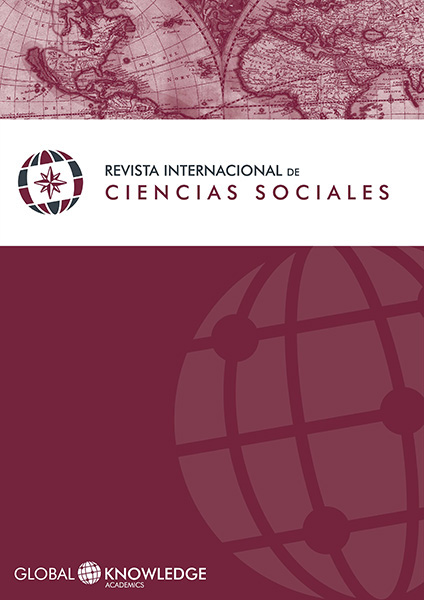Do Cubans select themselves in their migration? From Cuba to the United States
DOI:
https://doi.org/10.37467/gka-revsocial.v3.1136Keywords:
Migration, Cuba, Self-selection, Education, Binary Logit ModelAbstract
The aim of this paper is to study the educational self-selection problem of Cuban migrants to the United States. For the analysis, we specify and estimate a binary logit model to analyze the observable covariates that explain migration probability. The data used in the study came from the United States Census of Population and Housing of 2010, and from the Cuba Census of Population and Housing of 2002. The results indicate that education, age and occupational covariates explain migration probability. Moreover, there is a positive educational self-selection problem, that is, migrate those people with more educational level. The principal contribution of this paper is demonstrate that a high level educational increases the probability to emigrate.
Downloads
Global Statistics ℹ️
|
403
Views
|
177
Downloads
|
|
580
Total
|
|
References
Albo, A. y Ordaz Díaz, J. L. (2011). “Migración mexicana altamente calificada en EEUU y Transferencia de México a Estados Unidos a través del gasto en la educación de los migrantes”. Documentos de Trabajo . Análisis Económico. Servicio de Estudios Económicos. Fundación BBVA.
Anuario Demográfico de Cuba (2010). Oficina Nacional de Estadística. República de Cuba.
Bertoli, S., Fernández-Huertas, J. y Ortega, F. (2010). “Crossing the Border: Self-Selection, Earnings and Individual Migration Decisions”. Discussion paper series Nº4957 , Econstor. DOI: https://doi.org/10.2139/ssrn.1631092
Bohon, S.A. (2005). “Occupational attainment of latino immigrants in the United State”. Geographical Review , 95(2), pp.249-266. DOI: https://doi.org/10.1111/j.1931-0846.2005.tb00365.x
Borjas, G.J. (1987). “Self Selection and the Earnings of Immigrants”. American Economic Rewiew, 77(4), pp. 531-553. DOI: https://doi.org/10.3386/w2248
Borjas, G.J. (1991). Immigration and Self-Selection. Immigration, Trade and the Labor Market. John M. Abowd y Richard B. Freeman. Chicago: University of Chicago Press.
Burgard, S.A. (2007). Occupational Status . International Encyclopedia of the social science, Gale Group.
Cattan, P. (1993). “ The diversity of Hispanics in the U,S. work force”. Montly Labor Review, 8, pp. 3-15.
Castro, M.J. (2002). “The new Cuban immigration in Context”. Revista Inter-Forum. The Dante B. Fascell North-South Center. University of Miami.
Chevalier, A. (2003). “Measuring over-education”. Económica, 70(3), pp. 82-93. DOI: https://doi.org/10.1111/1468-0335.t01-1-00296
Chiquiar, D. y Hanson, G.H. (2005). “International Migration, Self-Selection, and the Distribution of Wages: Evidence from Mexico and the United States”. Journal of Political Economy, 113 (2), pp. 239-281. DOI: https://doi.org/10.1086/427464
Cuecuecha, A. (2010). “ Las características educativas de los emigrantes mexicanos a Estados Unidos”. EconoQuantum. Revista de Economía y Negocios , 7(1), pp. 7-38. DOI: https://doi.org/10.18381/eq.v7i1.118
Didou, S. (2009). ¿Pérdida de cerebros y ganancia de saberes?: la movilidad internacional de recursos humanos altamente calificados en América latina y el Caribe. Fuga de cerebros, movilidad académica, redes científicas. Perspectivas latinoamericanas. Sylvie Didou Aupetit y Etienne Gérard, edits, Centro de Investigación y Estudios Avanzados. Instituto Politécnico Nacional. México D.F pp. 25-63.
Durand, J., Massey, D.S. y Zenteno, R.M. (2001). “Mexican Immigration in the United States: Continuities and Changes”. Latin American Research Review , 36(1), pp. 107-127.
Global Migrant Origin Database (2007). Development Research Centre on Migration. Globalisation and Poverty. DFID.
Groot, W y Maassen, H. (2000). “Overeducation in the labor market: a meta-analysis”. Economics of Education Review , 19, pp. 149-158. DOI: https://doi.org/10.1016/S0272-7757(99)00057-6
Hotz, V. J. (2011). The Roy Model of Self-Selection: Simple Case . Topics in Labor Economics Duke University, en http://public.econ.duke.edu/~vjh3/e262p_07S/readings/Roy_Model_Simple_Case.pdf
Integrated Public Use Microdata Series (IPUMS) (2010) en Steven Ruggles, J.; Trent, A.; Genadek, K.; Goeken R,; Schroeder M.B. and Sobek, M., Version 5.0 [Machine-readable database]. Minneapolis: University of Minnesota.
Integrated Public Use Microdata Series, International (IPUMS-International) (2011). Version 6.1 [Machine-readable database]. Minnesota Population Center. Minneapolis: University of Minnesota.
Lowell, B.L., Pederzini, C. y Passel, J. (2008). The Demography of Mexico/U.S. Migration, Mexico- U.S Migration Management: A Binational Approach. Maryland, Lexington Books. Agustín Escobar y Susan F. Martin, edits.
Motel, S. y Patten, E. (2012). Hispanic of Cuban Origin in the United States . Statistical Profile, Pew Hispanic Center, en http://www.pewhispanic.org/files/2012/06/2010-Cuban-Factsheet.pdf.
Oficina Nacional de Estadísticas, ONE. (2012). Principales características del Censo de Población y Vivienda del 2012 en Cuba. La Habana.
Orrenius, P. M., y Zavodny, M. (2005). “Self Selection among undocumented immigrants from Mexico”, Journal of Development Economics , 78(1), pp. 215-240. DOI: https://doi.org/10.1016/j.jdeveco.2004.07.001
Pérez de la Riva, J. (2000). Los culíes chinos en Cuba . La Habana: Ciencias Sociales.
Roy, A.D. (1951). “Some Thoughts on the Distribution of Earnings”, Oxford Economics Papers, 3(2), pp. 135-146. DOI: https://doi.org/10.1093/oxfordjournals.oep.a041827
Sjaastad, L.A. (1962). “The costs and returns of human migration”, Journal of Political Economy, 70(5), parte 2: Investment in Human Beings, pp. 80–93. DOI: https://doi.org/10.1086/258726
U. S Census Bureau. (2010). Geographical Mobility/Migration Main . U.S Department of Commerce.
Downloads
Published
How to Cite
Issue
Section
License
Those authors who publish in this journal accept the following terms:
-
Authors retain copyright.
-
Authors transfer to the journal the right of first publication. The journal also owns the publishing rights.
-
All published contents are governed by an Attribution-NoDerivatives 4.0 International License.
Access the informative version and legal text of the license. By virtue of this, third parties are allowed to use what is published as long as they mention the authorship of the work and the first publication in this journal. If you transform the material, you may not distribute the modified work. -
Authors may make other independent and additional contractual arrangements for non-exclusive distribution of the version of the article published in this journal (e.g., inclusion in an institutional repository or publication in a book) as long as they clearly indicate that the work was first published in this journal.
- Authors are allowed and recommended to publish their work on the Internet (for example on institutional and personal websites), following the publication of, and referencing the journal, as this could lead to constructive exchanges and a more extensive and quick circulation of published works (see The Effect of Open Access).













